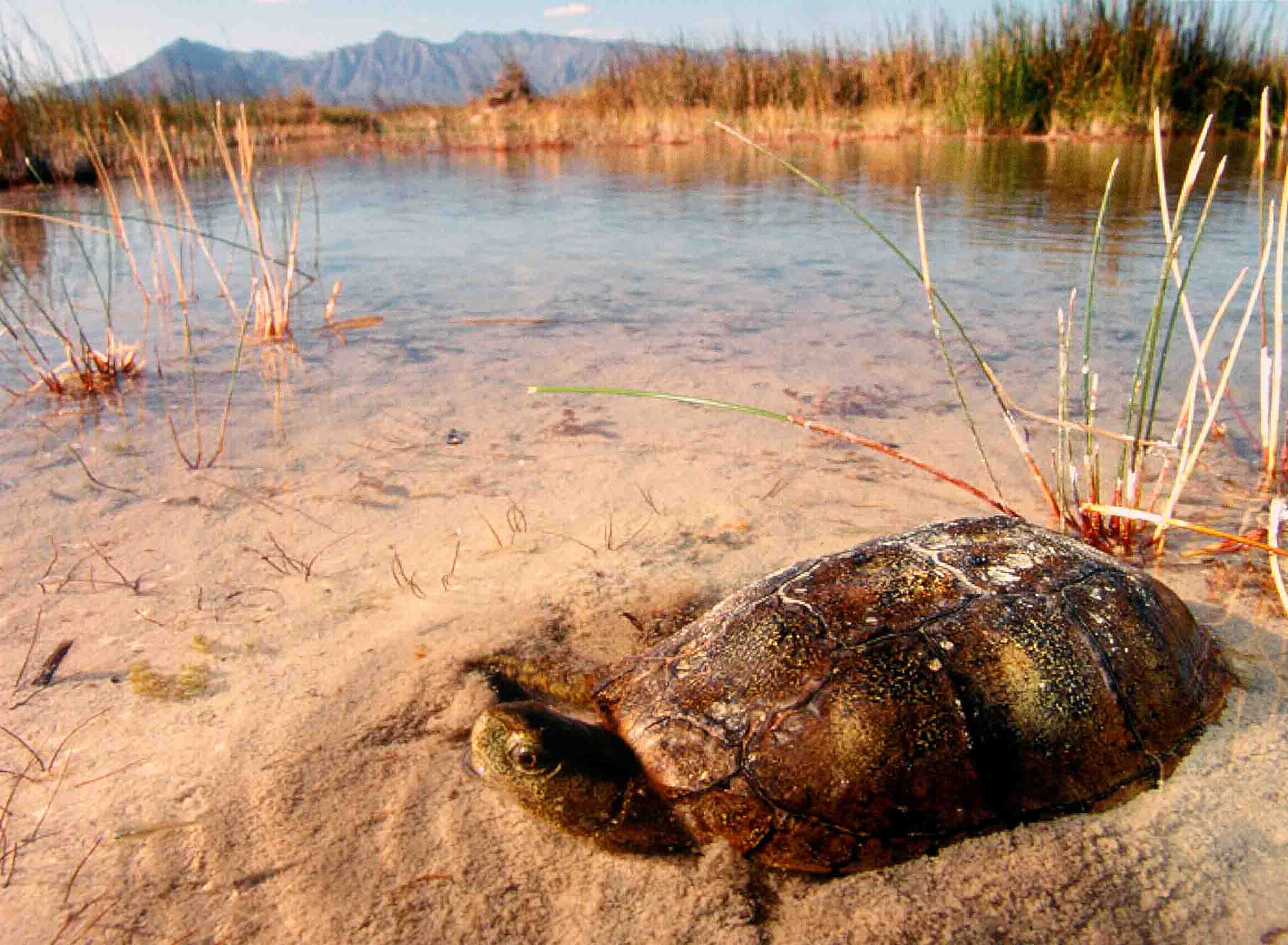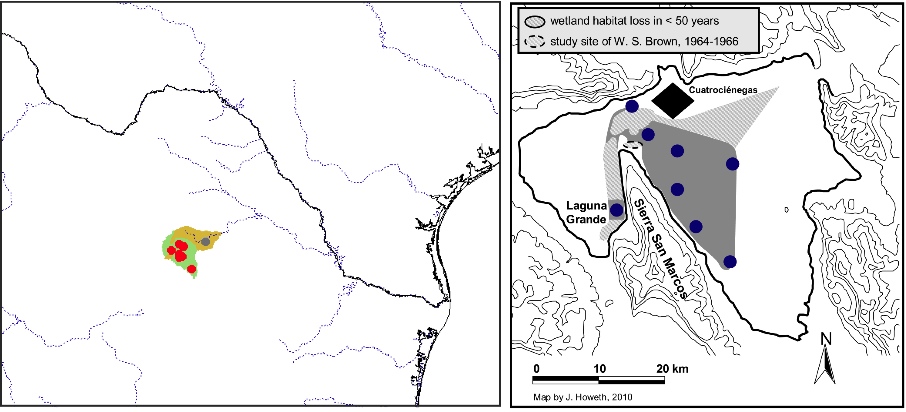Terrapene coahuila, 049
Terrapene coahuila Schmidt and Owens 1944 –
Coahuilan Box Turtle
Jennifer G. Howeth1,3 and William S. Brown2,4
1Section of Integrative Biology, University of Texas at Austin, Austin, Texas 78712 USA;
2Department of Biology, Skidmore College, Saratoga Springs, New York 12866 USA;
3Present Address: Department of Biological Sciences, University of Alabama,
Tuscaloosa, Alabama 35487 USA [[email protected]];
4Present Address: Department of Biological Sciences, State University of New York at Albany,
Albany, New York 12222 USA [[email protected]]
Summary. – The Coahuilan Box Turtle, Terrapene coahuila (Family Emydidae), endemic to the Cuatro Ciénegas Basin of central Coahuila, Mexico, is internationally recognized as endangered due to its naturally restricted geographic range and substantial loss of habitat in the past half-century. The only extant aquatic member of the genus, T. coahuila is a small species (carapace length to 230 mm) that occupies shallow wetland habitats distributed across the Cuatro Ciénegas valley floor. Water diversion from man-made canals within the basin, and groundwater exploitation in contributing aquifers outside of the basin, have lowered the valley’s water table and resulted in widespread wetland habitat desiccation, thus jeopardizing the species’ viability. The most extensive aquatic habitat loss has occurred in the western portion of the basin, west and northwest of Sierra de San Marcos y Pinos, where a genetically distinct subpopulation of T. coahuila resides. Habitat loss threatens the persistence of T. coahuila, and if not curtailed, will lead to the extinction of the species in the wild in Cuatro Ciénegas. Proposed conservation measures include: 1) upgrading the species’ conservation status with the Mexican government from a Species of Special Protection to Endangered, 2) formulating an integrative species management plan with the Mexican government that includes local and regional regulation and monitoring of water extraction to ensure persistence of critical wetland habitats, 3) long-term monitoring of key populations, including estimation of population size and density, 4) identification and preservation of critical dispersal corridors associated with long-distance movements of migratory populations, and 5) measures to reduce road mortality.
Distribution. – Mexico. Restricted to the Cuatro Ciénegas Basin, Coahuila.
Synonymy. – Terrapene coahuila Schmidt and Owens 1944, Terrapene ornata coahuila.
Subspecies. – None.
Status. – IUCN 2011 Red List: Endangered (EN A2c+4c; B1ab (i, ii, iii, iv, v) + 2b (i, ii, iii, iv, v)) (assessed 2007); CITES: Appendix I; US ESA: Endangered; Mexico: Species of Special Protection.
Citation:
Howeth, J.G. and Brown, W.S. 2011. Terrapene coahuila Schmidt and Owens 1944 – Coahuilan Box Turtle. In: Rhodin, A.G.J., Pritchard, P.C.H., van Dijk, P.P., Saumure, R.A., Buhlmann, K.A., Iverson, J.B., and Mittermeier, R.A. (Eds.). Conservation Biology of Freshwater Turtles and Tortoises: A Compilation Project of the IUCN/SSC Tortoise and Freshwater Turtle Specialist Group. Chelonian Research Monographs No. 5, pp. 049.1–049.13, doi:10.3854/crm.5.049.coahuila.v1.2011, //iucn-tftsg.org/cbftt/.
(Adobe Acrobat 6.0 or later required)

Terrapene coahuila in Cuatro Ciénegas, Mexico.
Photo by Jason M. Jones, www.herpfotos.com.
Distribution:

Left: Distribution of Terrapene coahuila in Coahuila, Mexico. Red dots = museum and literature occurrence records of native populations based on Iverson (1992) plus more recent and authors’ data; gray dot = extirpated population; olive shading = extirpated range; green shading = projected distribution based on GIS-defined hydrologic unit compartments (HUCs) constructed around verified localities and then adding HUCs that connect known point localities in the same watershed or physiographic region, and similar habitats and elevations as verified HUCs (Buhlmann et al. 2009), and adjusted based on authors’ data. Right: The Cuatro Ciénegas Basin (bold outline) and the current geographic range of T. coahuila (grey polygon). Distribution is denoted by known sites of collection or sight records, 2002–07 (solid circles), and has been greatly reduced compared to the historic distribution, 1958–68 (Fig. 2 in Brown 1974). See Fig. 6 for photographic illustration of habitat loss from 1965–2002. Documented T. coahuila wetland habitat loss has primarily occurred in the western and northern sections of the geographic range. The town of Cuatrociénegas de Carranza (diamond) is the human population center of the valley and supports irrigated agriculture.








